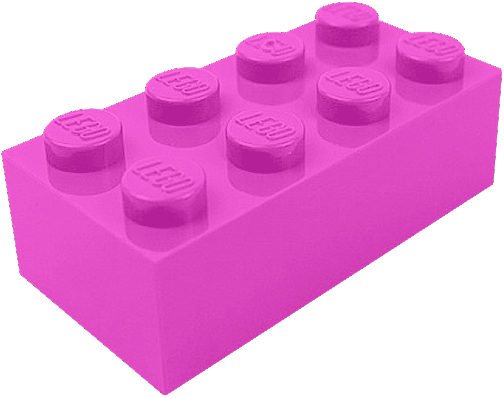PROFILE
![]()
Once upon a time… when children played with Legos, they built things without knowing what those things would be. They built things without confined and prescribed functionality. Both the excitement and challenge was to build things of uncertain outcome: asymmetrical things. There was a quiet joy in precisely those unknowns.
For many of us, Lego was about a direct confrontation with all that was possible and the consideration and refinement of creative options at every stage of building. Whatever it would become, the original Lego design product evolved by way of a singular and unpredictable process. It belonged to you, there was one, it was yours.
You can still buy raw bricks today, but they’re really not marketed anymore. Most Lego “sets” come with thick books filled with numbered directives. The building process now departs completely from a design process. Today’s Lego experience is primarily about how many pieces you can afford to buy and, ostensibly, how many directions you are willing and able to follow in inalterable sequence: the choice is not a creative one, it is a choice among the aisles of pre-ordained, symmetrical designs to replicate the fixed products displayed on their packaging.
This saddening but meaningful shift is not exclusive to the beloved Danish toy manufacturer. Formula-derived design of all types is convenient, normative, and on the rise. In architecture too, increasingly familiar design methodologies again reduce the process to one of compliance and direction taking, devoid of the creativity that yields the most meaning for the architect, the most joy for a building’s beholder, and the most significant architecture.
Our position is clear. Raw bricks. Intuition. Baumann Architecture.
![]()
Philippe Baumann RA founded Baumann Architecture PLLC in 2000, an architectural design studio with interests ranging from competitions to urban infill to global urbanism. The studio has extensive experience building in the City of New York, with projects currently under construction such as the innovative steel-sheathed Courtyard House in Gowanus and a zero-energy brownstone in Brooklyn.
Philippe is an honors graduate of Brown University and received his Masters in Architecture from Rice University in 1990. He is a cofounder of SITREP.at, a New York City-based “Design Tank” dedicated to the study of urbanity through architectural research and design, and secretary of The Institute for Public Architecture, a future residency program supporting a vibrant network of activist architects working in the public interest.
Philippe has been teaching architectural design in New York City since 1998, where he is currently Adjunct Associate Professor at Pratt Institute School of Architecture, and Instructor of Pratt Institute’s summer architecture program in Berlin titled “Temporary Contemporary Urbanism”.
For many of us, Lego was about a direct confrontation with all that was possible and the consideration and refinement of creative options at every stage of building. Whatever it would become, the original Lego design product evolved by way of a singular and unpredictable process. It belonged to you, there was one, it was yours.
You can still buy raw bricks today, but they’re really not marketed anymore. Most Lego “sets” come with thick books filled with numbered directives. The building process now departs completely from a design process. Today’s Lego experience is primarily about how many pieces you can afford to buy and, ostensibly, how many directions you are willing and able to follow in inalterable sequence: the choice is not a creative one, it is a choice among the aisles of pre-ordained, symmetrical designs to replicate the fixed products displayed on their packaging.
This saddening but meaningful shift is not exclusive to the beloved Danish toy manufacturer. Formula-derived design of all types is convenient, normative, and on the rise. In architecture too, increasingly familiar design methodologies again reduce the process to one of compliance and direction taking, devoid of the creativity that yields the most meaning for the architect, the most joy for a building’s beholder, and the most significant architecture.
Our position is clear. Raw bricks. Intuition. Baumann Architecture.

Philippe Baumann RA founded Baumann Architecture PLLC in 2000, an architectural design studio with interests ranging from competitions to urban infill to global urbanism. The studio has extensive experience building in the City of New York, with projects currently under construction such as the innovative steel-sheathed Courtyard House in Gowanus and a zero-energy brownstone in Brooklyn.
Philippe is an honors graduate of Brown University and received his Masters in Architecture from Rice University in 1990. He is a cofounder of SITREP.at, a New York City-based “Design Tank” dedicated to the study of urbanity through architectural research and design, and secretary of The Institute for Public Architecture, a future residency program supporting a vibrant network of activist architects working in the public interest.
Philippe has been teaching architectural design in New York City since 1998, where he is currently Adjunct Associate Professor at Pratt Institute School of Architecture, and Instructor of Pratt Institute’s summer architecture program in Berlin titled “Temporary Contemporary Urbanism”.
